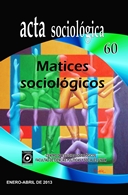Working the neighborhood: the Escrache as Cultural Intervention
Main Article Content
Abstract
The discussion of State terrorism of the last argentine dictatorship (19761983) centered, in the beginning, mainly on the courts. However, that process virtually stopped by laws and decrees that consolidated a “culture of impunity”. The struggle for justice returned then to the cultural terrain: the proliferation of strategies of memory shows it. Strategies of direct political action can also be conceived practices of memory, as well as those of narrative production. The escrache is a tactic developed since 1997 by H.I.J.O.S. (Daughters and Sons for Identity and Justice, against Forgetting and Silence), an organization that intervened on that culture of impunity forging social condemnation of genocidal state violence. To approach this practice, I analyze one action happened in Buenos Aires in 2002 following a film that shows it. I propose that these street actions are practices of collective memory in the street that based on the struggle for rights question the implicit cultural values of the neighbors and dispute the uses of public space, helping to build citizenship. These interventions constitute as well an emerging sign of an ongoing social debate about individual responsibility on collective life.
